Imagine enjoying fresh, delicious tomatoes grown right in your own home, without the need for soil or traditional gardening methods. Hydroponic tomato growing offers numerous benefits, such as faster growth, cleaner fruits, and larger yields. In this step-by-step guide, we will walk you through the exciting process of growing hydroponic tomatoes, from selecting the right varieties to troubleshooting common issues.
Short Summary
Grow tomatoes hydroponically for faster growth, higher yields and increased efficiency!
Select the right tomato variety to maximize your harvest with factors such as flavor, size & disease resistance.
Set up a system with grow lights, nutrient solutions & growing mediums then monitor regularly for successful harvests of delicious tomatoes!
Understanding Hydroponic Tomato Growing
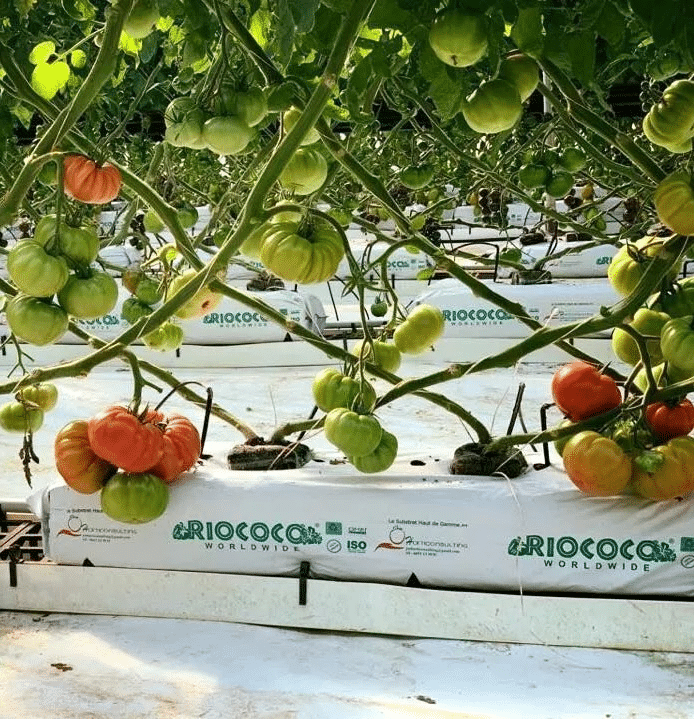
Growing tomatoes hydroponically is an innovative method that eliminates the need for soil, using inert media as anchors for the roots instead. This soil-free approach allows you to grow healthy and delicious tomatoes in a controlled environment, providing numerous advantages over traditional gardening methods.
Optimal conditions for hydroponic tomato growth include moderate climates with intense light for at least eight hours a day and temperatures ranging from 18 to 25 degrees Celsius.
Hydroponic Systems for Tomatoes
There are several hydroponic systems available for growing tomatoes, including ebb and flow, drip, aeroponics, deep water culture, Dutch bucket, and DIY options. The ebb and flow system, also known as the flood and drain system, consists of a reservoir, flood or grow table, water pump, and timer. This system provides plant roots with nutrients on a regular basis, giving them the best chance to thrive.
When selecting a hydroponic system, it is essential to carefully monitor nutrient, fertilizer, and pH levels for optimal results. Among the various growing mediums available for hydroponic tomatoes, rockwool, expanded clay pellets, coco coir, and perlite are popular choices.
Advantages of Hydroponic Tomatoes
One of the key benefits of hydroponic tomatoes is their faster growth rate. Because plants receive precisely the nutrients they require when they need them, growth is accelerated compared to soil-based gardening. Additionally, hydroponic tomatoes are incredibly clean, as they are grown in a sterile environment, free from soil-borne diseases and pests.
Hydroponic tomatoes also yield larger crops because they are grown in an ideal environment with optimized nutrient delivery. They are an excellent choice for year-round production, as they can be grown indoors with precisely controlled nutrient and light exposure. Furthermore, hydroponic systems are 90% more efficient in terms of water usage compared to traditional soil-based gardening methods.
Selecting the Right Tomato Varieties

When selecting tomato varieties for hydroponic growing, it is crucial to consider factors such as growth habit (determinate or indeterminate), size, flavor, and disease resistance. These factors can greatly impact the success of your hydroponic tomato garden.
Some popular hydroponic tomato varieties include ‘Tiny Tim' and ‘San Marzano' determinates, as well as ‘Brandywine' and ‘Burpee Big' vining tomatoes.
Determinate vs. Indeterminate Tomatoes
Determinate tomatoes are bush-type plants that produce all their fruit at once, making them an ideal choice for hydroponic systems with limited space.
Indeterminate tomatoes, on the other hand, are vining types that produce fruit continuously throughout the season. They require more space and support, such as trellises or cages, to accommodate their growth.
Both determinate and indeterminate tomatoes can be successfully grown hydroponically, but determinate varieties are generally easier to cultivate indoors.
Popular Hydroponic Tomato Varieties
There is a wide range of hydroponic tomato varieties to choose from, each with its unique characteristics. Some popular options include:
Trust
Matrix
Geronimo
Jelona Yellow
Clarance
Tricia
Ambiance
Tradario
Cocktail
Cherry
Plum
Delilah
Giant Beefsteak
Brandywine
Brandywine Pinke
Thessaloniki
Moskvich
Mortgage Lifter
Among these, cherry tomatoes are a popular choice for hydroponic gardening due to their small size and prolific fruit production.
Essential Components for Hydroponic Tomato Success
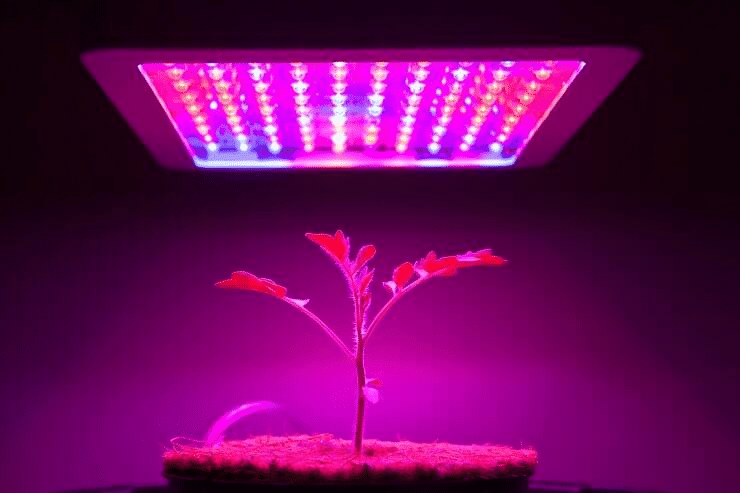
To achieve success in growing hydroponic tomatoes, several essential components must be considered. These include grow lights, nutrient solutions, and growing mediums.
Grow lights provide the necessary light intensity for optimal tomato growth, while nutrient solutions should be tailored to the specific needs of tomatoes, with high levels of nitrogen, phosphorus, potassium, and magnesium.
Grow Lights
Grow lights play a crucial role in hydroponic tomato growing, as they provide the necessary light intensity for optimal growth. LED and metal halide lights are the most popular choices for hydroponic tomato cultivation. LED grow lights are adjustable and often come with a timer, allowing you to create the perfect light conditions for your tomatoes throughout their growth cycle.
For the best results, hydroponic tomatoes require 8-10 hours of sunlight each day, with high-yield plants needing up to 18 hours of light per day.
Nutrient Solutions
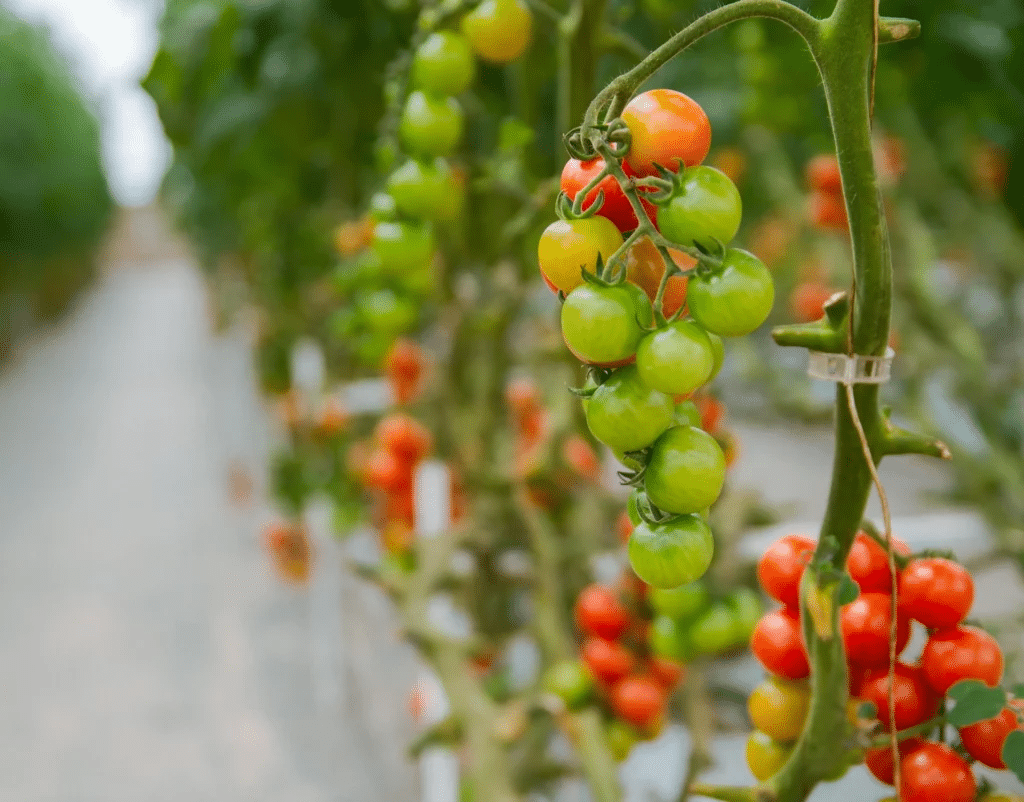
Nutrient solutions are essential for the successful growth of hydroponic tomatoes. They need ample amounts of potassium, nitrogen and phosphorus to grow well. Magnesium and other essential secondary nutrients too are important for their proper growth. It is crucial to monitor the nutrient solution regularly and adjust it according to the specific needs of your tomato plants.
Changing the nutrient solution approximately once a week will help ensure maximum success. Maintaining the ideal pH value of 5.8 to 6.3 is also vital.
Growing Mediums
Growing mediums provide physical support for the roots and should be chosen based on availability, cost, and ease of use. Expanded clay pellets, coconut coir, vermiculite, and perlite are all excellent choices for hydroponic tomato growing.
Rockwool cubes are another popular option for cultivating hydroponic tomatoes, as they provide an ideal environment for the plants to grow and thrive.
Inorganic & Sterile Growing Medium, A Superior Medium For Rooting Cuttings, Encourages Faster Initial Rooting & Its Firmness Is Guaranteed.

Step-by-Step Guide to Growing Hydroponic Tomatoes
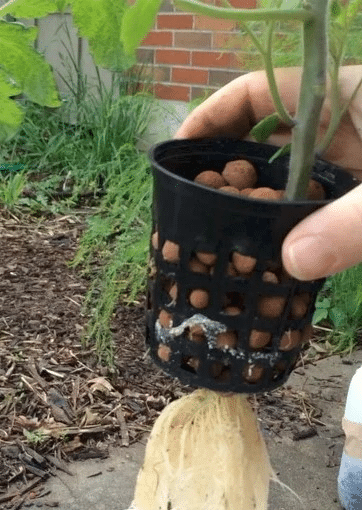
Now that you have a better understanding of hydroponic tomato growing, it's time to put it into practice. In this step-by-step guide, we will walk you through the process of setting up your hydroponic system.
Planting and caring for your tomatoes is an important part of the process. We will provide you with tips and tricks to ensure your tomatoes are healthy and thriving.
Finally, we will discuss harvesting and storing your delicious fruits. We will provide you with the best methods.
1. Setting Up Your Hydroponic System
Setting up your hydroponic system involves several important decisions. First, choose the right hydroponic system for your needs, such as ebb and flow, drip, aeroponics, deep water culture, Dutch bucket, or a DIY option.
Next, select grow lights that provide the necessary intensity for optimal tomato growth, with LED and metal halide lights being popular choices. Ensure your nutrient solution is tailored to the specific needs of tomatoes, with high levels of nitrogen, phosphorus, potassium, and magnesium.
Finally, choose a suitable growing medium, such as expanded clay pellets, coconut coir, vermiculite, or perlite.
2. Planting and Care
Begin by germinating your tomato seeds using a special germination tray like rockwool cubes or Rapid rooter plant starters. Once the seedlings have sprouted, transplant them into your hydroponic system, ensuring their roots have plenty of space and the base of the stem is covered with the growing medium.
During the growth process, pruning your tomato plants is essential to direct their energy towards producing more tomatoes rather than growing more branches and leaves. Regularly monitor your plants for irregularities, such as nutrient deficiencies or pests, and adjust the nutrient solution or apply organic remedies as needed.
3. Harvesting and Storage
When it's time to harvest your hydroponic tomatoes, wait for them to reach their mature green stage, displaying the first blush of red. To store your freshly picked tomatoes for long-term use, place them in airtight containers and store them in a cool, dark cabinet or cupboard for up to six months or freeze them for up to one year.
This way, you can enjoy the fruits of your labor for an extended period.

Troubleshooting Common Hydroponic Tomato Issues
Growing hydroponic tomatoes can sometimes present challenges, such as nutrient deficiencies, pests, and diseases. Identifying and addressing these issues promptly is crucial to ensuring the success of your hydroponic tomato garden.
Good hydroponic tomato gardening practices include providing adequate light, monitoring pH levels, and ensuring proper nutrient levels. Additionally, it is important to regularly inspect plants for signs of pests or disease.
Nutrient Deficiencies
Nutrient deficiencies can manifest as yellowing leaves, stunted growth, and poor fruit quality. To address these issues, first identify the specific nutrient(s) that are lacking and adjust the nutrient solution accordingly.
You can also add a fertilizer specifically formulated for hydroponic tomatoes to give your plants the extra nutrients they need.

Pests and Diseases
Pests and diseases can be a concern for hydroponic tomatoes, but there are organic remedies available to help protect your plants. Neem oil, garlic, and essential oils can be used to prevent and treat common pests and diseases affecting hydroponic tomatoes.
Regularly monitoring your plants and addressing any issues as soon as they arise can help ensure a healthy, successful hydroponic tomato garden.
Summary
Growing hydroponic tomatoes offers numerous benefits, from faster growth and larger yields to the ability to grow fresh, delicious tomatoes year-round in the comfort of your own home. By following the steps outlined in this guide, from selecting the right varieties and setting up your hydroponic system to planting, caring for, and harvesting your tomatoes, you'll be well on your way to enjoying the fruits of your labor. So why not embark on the rewarding journey of hydroponic tomato growing and experience the satisfaction of harvesting your own delicious tomatoes?
Frequently Asked Questions
Do tomatoes grow well in hydroponics?
Tomatoes do exceptionally well when grown using hydroponic systems, particularly the Dutch-bucket system. This method provides adequate space for the roots to absorb water and nutrients easily and successfully, allowing the tomato plant to thrive.
Hydroponics is an ideal way to ensure a healthy crop of tomatoes.
How long does it take tomatoes to grow hydroponically?
With proper care and nutrients, tomatoes grown hydroponically can be ready to harvest in as little as 45 days, with larger varieties taking up to 70 days.
Enjoy your own fresh tomatoes all year long!
How long do hydroponic tomatoes live?
When given the proper care and conditions, hydroponic tomatoes can thrive for up to 5 years, providing an abundance of juicy fruits over multiple growing seasons.
With the right know-how and effort, you can enjoy fresh and delicious homegrown tomatoes year-round!


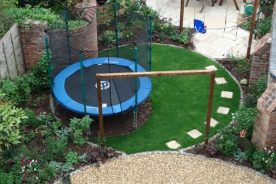
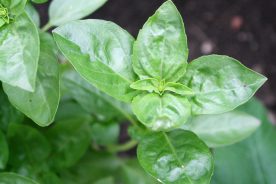

No Comments